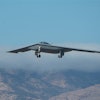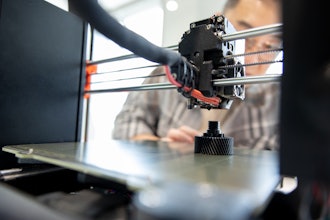On behalf of all the employees of Siemens PLM Software, we would like to congratulate our partner, NASA’s Jet Propulsion Laboratory (JPL) for successfully landing the “Curiosity” Rover on Mars.
It’s well documented that the difficulty in landing a 2000 pound vehicle on a planet that is 248 million km (154 million miles) away, travelling at speeds up to 300 times that of a Formula One racecar and experiencing a temperature range of more than 3000° F (-463 to +2637) is, for lack of a better word, ENORMOUS. Think of it this way, we describe cars as going from 0-60 in 2.1 seconds. NASA did just the opposite. They took something the size of a Mini Cooper from 13,000 mph to a complete stop during a timeframe they call the “Seven Minutes of Terror”.
But exactly how did the very smart people at NASA develop a machine that could withstand such engineering challenges as the shock and vibration at take off in Cape Canaval to the constant heating of the sun and frigid cold of deep space to ensuring the spacecraft maintains its trajectory, and is positioned optimally for solar energy capture, and signal dispatch back to Earth? (yes, the answer is…with the help of Siemens PLM software technology)
Spacecraft design is unique. According to Bill Allen, mechanical design engineer at JPL:
“We don’t get a chance to retry or rebuild or service or redesign. We have one shot—and it’s usually doing something we’ve never done before. We’re trying to use existing tools and processes to get us through a unique design.”
You might recognize Bill from the interviews that Chris Kelley and Dora Smith did with him on this blog or have seen him at one of our PLM Connections events over the years. He’s provided lots of information about how JPL uses our software; thanks Bill!
The Curiosity design required JPL to use intelligently integrated information to solve the very complex engineering challenges faced by all the variables I mentioned above. Almost a decade ago, JPL began using something we called “Beta NX 1”. JPL used to have a very diverse set of modeling and data management tools — mainly people’s file cabinets – and they needed a more modern and “future-proof” environment. Both NX and Teamcenter provided JPL with a seamless architecture and more software-to-software interfaces, providing them with better control of the delivery and receipt of data. How much data? Approximately 1 terabyte. By using integrated CAD/CAM/CAE technology, JPL was able to digitally design, simulate and assemble the Rover before any physical prototypes were built.
NX helped ensure all components of the Rover would fit together, operate properly and withstand whatever environment the mission would require. Our technology was even used to predict and control the temperature variation of sophisticated instruments to less than 1 degree Celsius. The result was faster iterations in design and analysis, less manual rework, increased efficiency and more confidence in the design implementation and mission simulations.
For future missions, JPL engineers will be able to re-use designs or design features, such as a thruster or particular heat rejection system, because the entire Rover model is now in a managed database. According to JPL, this will result in greatly improved efficiency, configuration management and knowledge retention.
Why CAE was such an important part of the development process
As I mentioned above, the Rover experiences a vast range of temperatures. Nothing like the temperature we experience on Earth. Even the freezing polar cap of Antarctica or the desert heat of Egypt couldn’t match what the Rover faced in space.
In the February 2012 cover Story of Desktop Engineering, JPL’s Art Avila, a 27-year veteran of JPL & manager of the Mars Space Laboratory’s (MSL) Thermal and Cryogenic Engineering Section had this to say
“When you’re dealing with Earth-based development, you just don’t have the range of dynamic and thermal loads that something that’s expected to leave our planet and land on another planet is going to experience. We have to balance risk, cost, volume [and mass] in a different trade space than one would with a car or a plane.”
NX successfully helped JPL create the geometry and generate the thermal model, while Teamcenter efficiently captures and maintains the design data. That allows much quicker integration of new design features into their CAE environment to update their models and perform analyses quickly.
You can find more information about JPL’s use of NX CAE and the thermal challenges they faced in our case study.
It takes great people to do great things
Here at Siemens PLM, we are lucky enough to have among us, one of the engineers who helped design Curiosity. I’d like you to meet Daren Rhoades, new product development manager for Siemens PLM and former JPL employee. Daren was an engineer in the Space Craft Structure Group at JPL and a member of the Rover Design team. He now takes his experience at NASA and helps Siemens PLM explore new technologies and incorporate new ideas in our products.
While at JPL, Daren used NX for design, motion simulation and stress analysis to speed decision making. In the NX rendering of the rover to the left, different systems are color coded. Daren’s specific job was the gray box in the middle that houses everything from scientific instruments, wiring, computers and telecommunications equipment. He said that it was the first time JPL included harness design in the initial configuration of the rover and it wouldn’t have worked otherwise because it is easy to forget how much space wiring consumes. And on this mission, JPL was able to take advantage of the fact that Mars’ atmosphere is mainly comprised of carbon dioxide, something they learned on previous missions, to use as an insulator for electronics inside the rover.
When I asked Daren about his experience using NX and Teamcenter, he had this to say:
“Having the current design visible to the entire team is imperative when making decisions. We conducted regular design reviews where the NX model was up on the big screen and we would have everyone from the stress analysis group to the wire harness group make changes right there in the design room. It was great to have everyone marching to the same beat.”
NASA JPL is living proof that Siemens’ vision of High-Definition PLM (HD-PLM) can help any company across all industries achieve a new level of productivity and quality.






















